Subscriber Benefit
As a subscriber you can listen to articles at work, in the car, or while you work out. Subscribe Now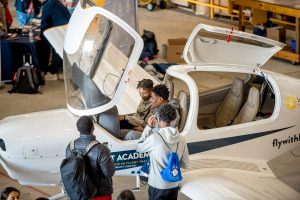
Because the North American airline industry cut employees in response to its hit from COVID-19, it is now 8,000 pilots short of where it needs to be to meet demand.
That data comes from New York-based management consulting firm Oliver Wyman, which also predicts that—without remediation—the pilot shortage could swell to 30,000 by 2032.
Indianapolis-based Republic Airways is taking steps to remedy the situation—and to attract future talent—through a combination of recruitment, training and retention efforts, including a career fair for middle school, high school and college students.
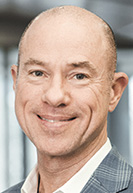
During the first year of COVID, airlines were basically paying people not to come to work, so a lot of commercial pilots let their medical authorizations to fly lapse, said Republic Airways CEO Bryan Bedford. “By fall 2020, they were no longer considered legal to operate.”
At the same time, many airlines offered senior pilots early-retirement packages. As travel, particularly leisure travel, began to rebound in the spring of 2021, airlines found themselves unprepared to accommodate the rush. The result? Understaffing, higher airfares and fewer flight options.
“The good news is, now that schedules have been pared back, we’re confident as an industry that we can fly reliable service over the holidays,” Bedford said.
Commercial pilots in the market for new jobs are finding themselves in a strong position. According to U.S. Bureau of Labor statistics, “Overall employment of airline and commercial pilots is projected to grow 6% from 2021 to 2031, about as fast as average for all occupations.” Bedford said he believes that’s an underestimation.
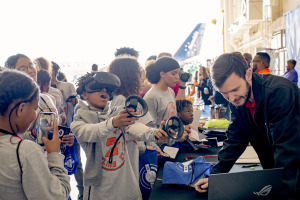
“There’s a lot of pent-up growth demand,” he said. “Over the next two years, I think we’re going to see demand for north of 10,000 [positions] for sure, just trying to catch up from these lost COVID years.”
When pilots with the most seniority retire or leave the workforce, major airlines typically move up others from within their own ranks or draw from the pools of smaller competitors like Republic.
To attract talent, Republic continually looks for new ways to let students know about varied employment opportunities within the industry. Last month, the company partnered with the Indianapolis International Airport, Ivy Tech Community College and other stakeholders to host a three-day Aviation Career Summit in Indianapolis, attracting more than 1,100 attendees (including 750 students of color) from across the state.
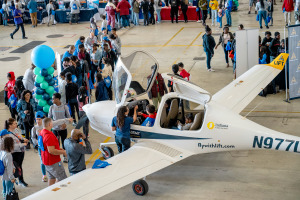
Sandy Rushdan, a math teacher at Eggers Middle School in Hammond, said the students she chaperoned for the event really enjoyed the experience, and that the exposure they received opened their eyes to the idea of careers in aviation. For many of them, it was the first time they’d ever seen an airplane up close and walked onto one.
“It planted a seed for those students, and it will change some of their lives,” she said. “Some of these kids are living in underserved areas. When those seeds are planted, it helps them visualize possibilities and understand that their current situation doesn’t have to be permanent. It gives them hope.”
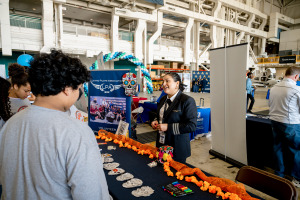
Financial assistance
Pilot training doesn’t traditionally come cheap, which can be a significant barrier for people from underrepresented communities. Republic looks for ways to work with people who might need financial assistance to achieve their dreams of flight.
“Money shouldn’t be the reason smart kids aren’t pursuing a career in aviation,” Bedford said. “It’s not easy to become a commercial airline pilot, but once you cross over into it, the opportunities are amazing.”
Republic is committed to improving diversity, he said.
“We haven’t moved the needle on female, African American or Latino representation in the commercial airline industry in over a decade,” he added.
With inclusion in mind, Republic filed a petition last year with the Federal Aviation Administration that would have allowed co-pilots to fly for the airline with 750 hours of flight experience (half of the 1,500 currently required) if they otherwise completed the carrier’s training program.
Bedford said the goal wasn’t directly intended to address the pilot shortage but instead to increase access to the profession.
“We put together this program thinking we would offer 100 slots to underrepresented communities within our area, pay a $30,000 [annual] salary for them to come train, and provide that training,” he said. “We asked the government to reduce the amount of what we think of as non-value-added time-building in order to make the program work.”
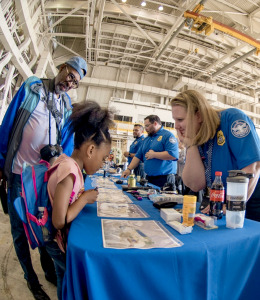
The FAA denied the proposal, saying the plan didn’t “provide an equivalent level of safety as the regulation requiring 1,500 hours of flight experience before a pilot may work for an airline.”
However, this January, the FAA awarded $5 million in grant money to fund aviation classes at accredited higher-learning institutions, high schools and flight schools to help develop the next generation of pilots.
Republic partners with more than 50 university programs at two- and four-year schools across the country that offer commercial pilot curriculum. Bedford said the airline hopes to make an announcement regarding its first direct partnership with a historically Black college or university by the end of the year.
Republic has also managed the Leadership In Flight Training, or LIFT, Academy in Indianapolis since 2018 and is in the process of opening a satellite location at the Myrtle Beach International Airport with plans to seat its first South Carolina flight class in January.
The academy offers a maintenance technician apprenticeship program and a licensed aircraft dispatch school in addition to pilot training. LIFT’s Indy location accommodates up to 300 students each year through a 12-month program and creates a direct pathway to employment with Republic after graduation.
Chicago-based United Airlines launched its own Aviate Academy in Arizona earlier this year, Dallas-based American Airlines regional carriers have increased pilot pay 50% through August 2024, and Atlanta-based Delta has dropped its four-year-degree hiring requirement for pilots, all in their own bids to help stem the pilot shortage.
Increasing pay
Throughout the industry, pilots are pushing for more pay. Just last month, Republic pilots represented by Teamsters Local 357 ratified a new agreement that will provide first officers with pay increases of 70% to 90%. Captains will receive a 54% pay raise. Tense labor negotiations continue at American, Delta and United.
“Compensation and what we refer to as quality-of-life issues are really what drive retention for us,” Bedford said. “[Commercial airline piloting] is a great career. You can live in Indianapolis, with a very reasonable cost of living and make $250,000 a year flying 15 days a month. That’s what’s possible.”
In 2021, median pay for commercial airline pilots was $134,630 per year, according to the U.S. Bureau of Labor Statistics.
Republic is in the process of moving its Indianapolis, Cincinnati and St. Louis operations to a new facility in Carmel. Within six months, the Carmel site will house all of the company’s pilot, flight attendant and technician training.
“Obviously, we’re here in Indiana for the long haul,” Bedford said. “We believe that the state of Indiana is open for business. It’s a great environment. People love living here. We know we’re competing with other airlines all across the country; we want to make Indiana a location of choice for folks starting their careers.”•
Please enable JavaScript to view this content.
